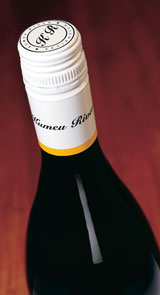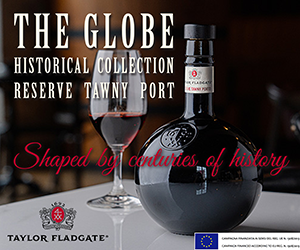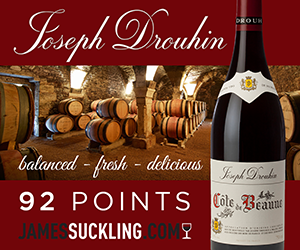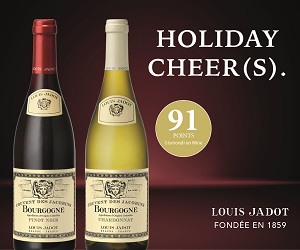At this year's International Wine Challenge, the world's biggest competition, the panel of expert tasters found that nearly one in 20 - 4.9% - of the 11,033 corks pulled from bottles had spoiled or flattened the flavour of the wine they were supposed to protect.

Following this discovery, Wine International magazine, the organisers of the competition, held the world's first comparative tasting of wines sealed with natural corks, synthetic corks, screwcaps and even crown-caps similar to the one used for beer. The result was astonishing. Screwcaps were preferred in 21 out of 40 cases; corks only won once.
THE TASTING
Nearly 50 wines from throughout the world were assembled in Bordeaux and set before 45 tasters, including leading authorities and winemakers, Michel Laroche of Chablis, Peter Gago of Penfolds, Jean-Marie Chadronnier of Dourthe in Bordeaux and Michel Rolland, the world's most famous wine consultant. The tasters were given examples of the same wines from different kinds of closure "blind" and asked to say which, if any, they preferred. In a few cases where no cork-sealed bottle was available, they were given asked for their opinion of single examples of wine with alternative closures
CORKS FAIL
Out of 40 wines where comparison was possible, cork only came out on top once - with a preference of 57% for the Esk Valley 2002 Sauvignon Blanc from New Zealand. Of the others, the tasters preferred the screwcap in 21 cases, and, in one case - the Kuehn Riesling from Germany - the crowncap. Otherwise, no significant difference was found.
WINES AGE BETTER WITH SCREWCAP
Revealingly, some of the strongest preferences were for older wines with screwcaps. The experimental screwcap Henschke Keyneton 1995 and Penfolds Bin 389 1996 from Australia scored 70% and 77% respectively. (The screwcap 1995 Penfolds Bin 2 actually scored 100%, but that was because the natural-cork stopped bottle was one of the two obviously cork-tainted wines in the tasting).There was also high praise for the freshness of the screwcap 1980 Yalumba Riesling from Australia, 1983 Kanonkop Paul Sauer red from South Africa, 1992 Provins Swiss wines and a pair of 1996 synthetic cork St Francis Cabernets from California. Sadly no cork-stoppered examples of these wines were available for tasting, but Robert Hill Smith, Chief Executive of Yalumba was confident that the screwcap had kept his wine in far better condition than a cork would have done.
NO NEED TO BREATHE
As Robert Joseph points out in his report in the October issue of Wine International, the explanation for the success of the alternative closures lies both in the fact that, unlike natural cork, they in no way flavour the wine and that they far more efficiently protect it from the air. The widely-held belief that wines need to "breathe" through the cork was, in fact dismissed by the leading Bordeaux authority Professor Pascal Ribereau-Gayon in 2000 when he wrote in the Handbook of Enology that "reactions that take place in bottled wine do not require oxygen". Proof of this is found in bottles of old port whose corks are dipped in sealing wax that presumably prevents the wine from breathing, and in the bottles that are occasionally rescued from the ocean floor.
Synthetic closures are currently used in 7-9% of bottles, a number that is growing due to the exasperation by producers and retailers with the unreliability of the corks they are able to buy. The pioneers of the recent use of screwcaps have been the winemakers of the New World. Among the Australian adopters are such well-known names as Yalumba, Penfolds, Jacobs Creek, Grossett and Henschke, as well as the vast majority of producers in the Clare Valley. In New Zealand a "screwcap initiative" was led by the world-famous Kumeu River and has been followed by a growing number of wineries including Jackson Estate, Felton Road and Cloudy Bay. In South Africa, Vergelegen - thought by many to be the best producer in the Cape - has introduced screwcaps, while Bonny Doon and Plumpjack whose wines sell for over £60 per bottle are the first of a number of Californian cult wineries to do so.
Europe- apart from Switzerland which has used screwcaps widely for decades - has been slower to introduce screwcaps, and even to experiment on alternatives. This is changing rapidly however. The Wine International tasting included screwcap Chablis and southern French Merlot from Laroche; Bordeaux from Dourthe and Chateau le Raz; Alsace from Paul Blanck; Vina Esmeralda from Torres in Spain and crown-cap Rieslings from Kuehn in Germany. Given the prestige of these producers and the success of their wines in this tasting, others are bound to follow their lead. They will be encouraged to do so by the biggest wine retailer in the UK, Tesco, which has had almost no customer-resistance to the introduction of large numbers of screwcap wines to its shelves. The chain is now selling up to a million bottles of high quality screwcap wine per week.
ENVIROMENTAL ISSUES
The popularity of alternative closures raises environmental issues, but as Robert Joseph points out, scare stories about the imminent disappearance of Portugal's cork forests may have more to do with the 6.5m Euro being spent by the cork manufacturers on PR and advertising than with reality. There is little publicity being given to the fact that the cork forests are expanding by 4% - and that numbers of animals like the Iberian lynx that are supposedly threatened by the recent success of the alternatives have in fact been declining for a century
Details of the International Wine Challenge and of the Corks vs Alternatives tasting can be found in Wine International Magazine, October, and on the WWW.wineint.com website.

 quicksearch
quicksearch





